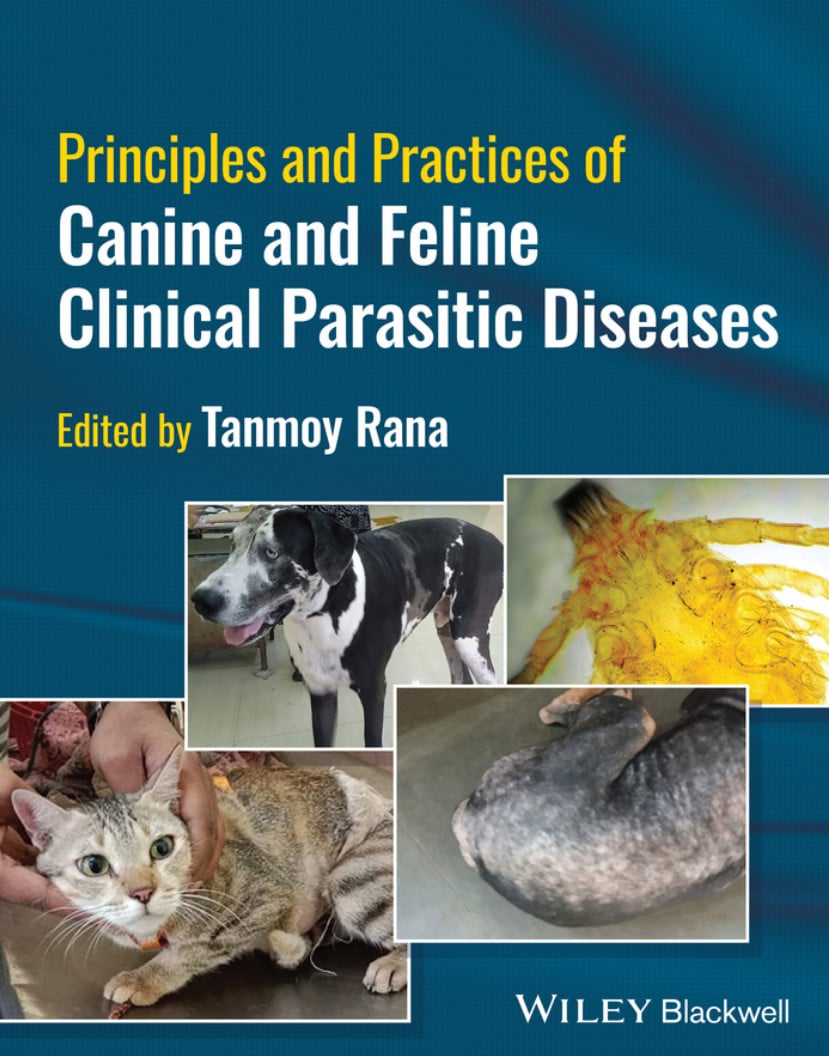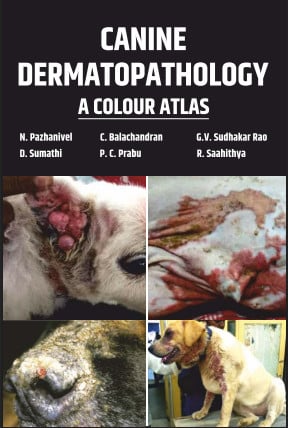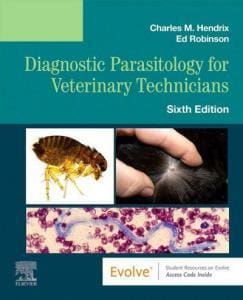
By Tanmoy Rana
Principles and Practices of Canine and Feline Clinical Parasitic Diseases is a helpful, introductory practical guidebook that helps identify the parasites infecting these animals and suggests useful treatment strategies based on an appropriate diagnosis.
Principles and Practices of Canine and Feline Clinical Parasitic Diseases comprehensively details its topic from symbiosis and parasitism, to therapeutics measures and control strategies, to the deleterious effect of parasites in various organs in dogs and cats. The book offers extensive information on management approaches, the most significant clinical findings, diagnostic approaches, disease prevention, and drug evaluation. As a reference, the guide provides systems for the identification of the pathogens and recognizes the severity and exhibition of disease manifestation.

Features
Features:
- Preventative measures that can be utilized to prophylactically assure the continued health of the patient
- Chapters written by contributors with specialized knowledge in each particular subject presented
- The most up-to-date advanced research in the field of parasitic diseases
- Each chapter covers treatment schedules, details about the disease, and a management approach, using figures and line figures to aid in identification and treatment
Table of Contents
Table of Contents:
-
General Introduction to Canine and Feline Parasitic Diseases
-
Symbiosis and Parasitism in Dogs and Cats
-
Risk Factors Associated with Parasitic Diseases
-
Host–Parasite–Microbiome Interactions
-
Linguatula serrata Worm Infections
-
Annelida Infestations
-
Insecta Infestations
-
Acanthocephala Worm Infections
-
Tick-borne Diseases
-
Roundworm Infections
-
Tapeworm Infections
-
Fluke Infections
-
Protozoan Infections
-
Immunology and Pathogenic Purview
-
Parasitic Zoonoses and One Health
-
Parasitic Fauna Associated with Reproductive Disorders
-
Diagnostic Perspectives of Parasitic Diseases
-
Anti-helminthic Resistance
-
Molecular Biology of Parasites
-
Parasitic Vaccines
-
Biological Control of Parasites
-
Therapeutic Measures and Control Strategies
-
Future Advanced Research Directions
Glossary
References
Index















![Ettinger’s Textbook of Veterinary Internal Medicine 9th Edition [PDF+Videos] Ettinger’s Textbook of Veterinary Internal Medicine 9th Edition [True PDF+Videos]](https://www.vet-ebooks.com/wp-content/uploads/2024/10/ettingers-textbook-of-veterinary-internal-medicine-9th-edition-100x70.jpg)

![Textbook of Veterinary Diagnostic Radiology 8th Edition [PDF+Videos+Quizzes] Thrall’s Textbook of Veterinary Diagnostic Radiology, 8th edition PDF](https://www.vet-ebooks.com/wp-content/uploads/2019/09/textbook-of-veterinary-diagnostic-radiology-8th-edition-100x70.jpg)






